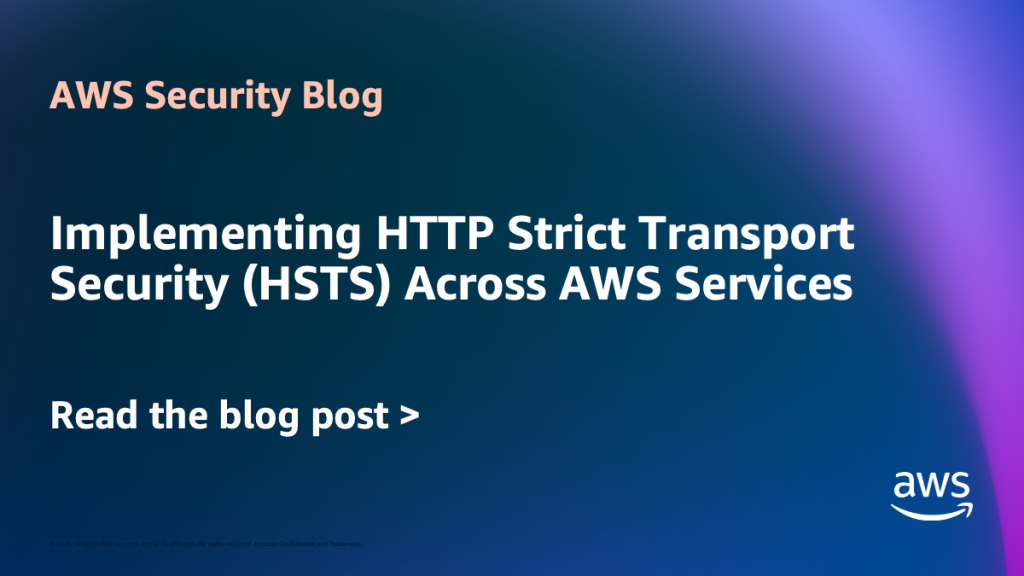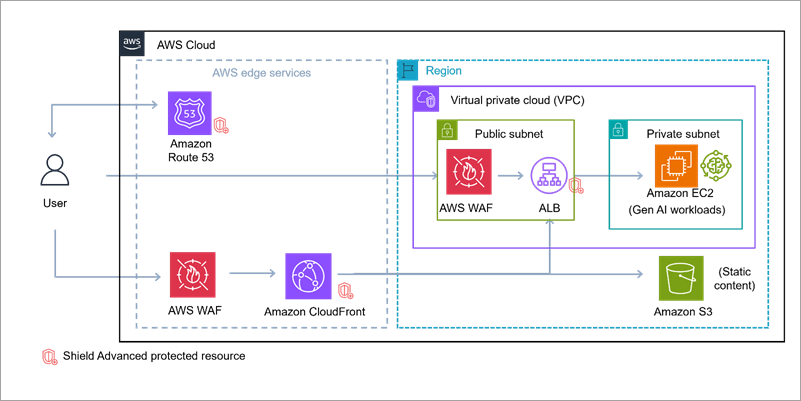AWS Security Blog
Category: Best Practices
Implementing HTTP Strict Transport Security (HSTS) across AWS services
Modern web applications built on Amazon Web Services (AWS) often span multiple services to deliver scalable, performant solutions. However, customers encounter challenges when implementing a cohesive HTTP Strict Transport Security (HSTS) strategy across these distributed architectures. Customers face fragmented security implementation challenges because different AWS services require distinct approaches to HSTS configuration, leading to inconsistent […]
China-nexus cyber threat groups rapidly exploit React2Shell vulnerability (CVE-2025-55182)
December 12, 2025: The blog post was updated to clarify when customers need to update their ReactJS version. Within hours of the public disclosure of CVE-2025-55182 (React2Shell) on December 3, 2025, Amazon threat intelligence teams observed active exploitation attempts by multiple China state-nexus threat groups, including Earth Lamia and Jackpot Panda. This critical vulnerability in […]
New Amazon Threat Intelligence findings: Nation-state actors bridging cyber and kinetic warfare
The new threat landscape The line between cyber warfare and traditional kinetic operations is rapidly blurring. Recent investigations by Amazon threat intelligence teams have uncovered a new trend that they’re calling cyber-enabled kinetic targeting in which nation-state threat actors systematically use cyber operations to enable and enhance physical operations. Traditional cybersecurity frameworks often treat digital […]
Amazon discovers APT exploiting Cisco and Citrix zero-days
The Amazon threat intelligence teams have identified an advanced threat actor exploiting previously undisclosed zero-day vulnerabilities in Cisco Identity Service Engine (ISE) and Citrix systems. The campaign used custom malware and demonstrated access to multiple undisclosed vulnerabilities. This discovery highlights the trend of threat actors focusing on critical identity and network access control infrastructure—the systems […]
Securing Amazon Bedrock API keys: Best practices for implementation and management
Recently, AWS released Amazon Bedrock API keys to make calls to the Amazon Bedrock API. In this post, we provide practical security guidance on effectively implementing, monitoring, and managing this new option for accessing Amazon Bedrock to help you build a comprehensive strategy for securing these keys. We also provide guidance on the larger family […]
Securing AI agents with Amazon Bedrock AgentCore Identity
By using Amazon Bedrock AgentCore, developers can build agentic workloads using a comprehensive set of enterprise-grade services that help quickly and securely deploy and operate AI agents at scale using any framework and model, hosted on Amazon Bedrock or elsewhere. AgentCore services are modular and composable, allowing them to be used together or independently. To […]
Should I use managed login or create a custom UI in Amazon Cognito?
October 8, 2025: This blog post has been updated to include the Amazon Cognito managed login experience. The managed login experience has an updated look, additional features, and enhanced customization options. September 8, 2023: It’s important to know that if you activate user sign-up in your user pool, anyone on the internet can sign up […]
Defending LLM applications against Unicode character smuggling
When interacting with AI applications, even seemingly innocent elements—such as Unicode characters—can have significant implications for security and data integrity. At Amazon Web Services (AWS), we continuously evaluate and address emerging threats across aspects of AI systems. In this blog post, we explore Unicode tag blocks, a specific range of characters spanning from U+E0000 to […]
Build secure network architectures for generative AI applications using AWS services
As generative AI becomes foundational across industries—powering everything from conversational agents to real-time media synthesis—it simultaneously creates new opportunities for bad actors to exploit. The complex architectures behind generative AI applications expose a large surface area including public-facing APIs, inference services, custom web applications, and integrations with cloud infrastructure. These systems are not immune to […]
Enabling AI adoption at scale through enterprise risk management framework – Part 2
In Part 1 of this series, we explored the fundamental risks and governance considerations. In this part, we examine practical strategies for adapting your enterprise risk management framework (ERMF) to harness generative AI’s power while maintaining robust controls. This part covers: Adapting your ERMF for the cloud Adapting your ERMF for generative AI Sustainable Risk […]







